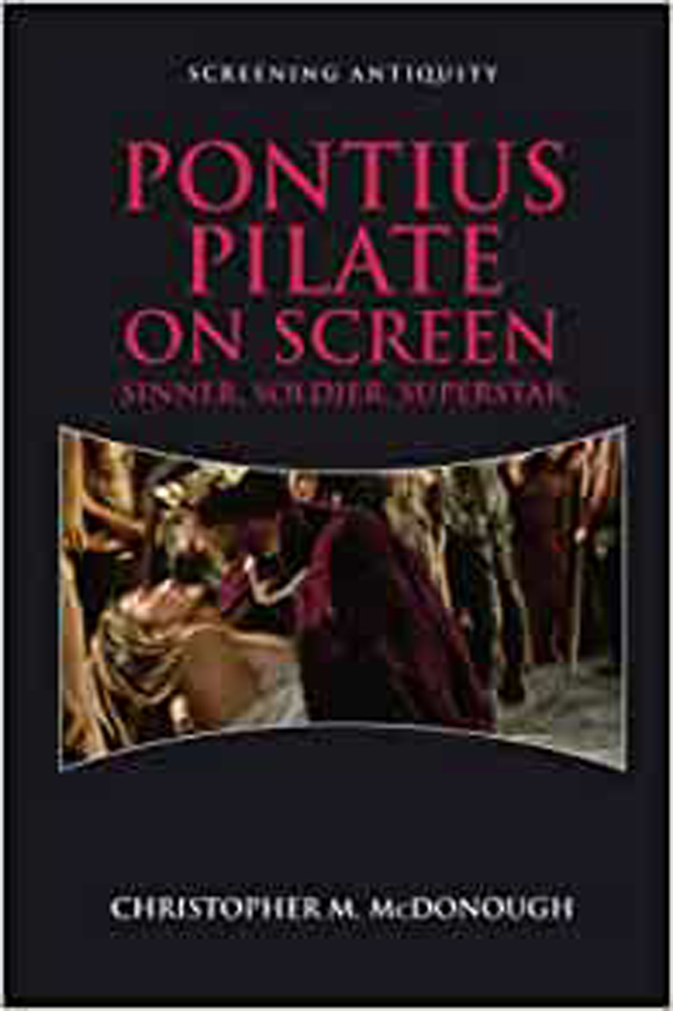
As every theologian knows, the Gospels are not works of history, but they drop clues about history which can be pieced together, though, as with every reconstruction, the way the shards of mosaic are put together will produce sometimes quite radically different pictures. No one embodies this better than Pontius Pilate, who, in the retelling of the Gospels in film, emerges as a widely differing character. As Christopher McDonough points out, the Pontius Pilate we construct tells us more about ourselves and our own times than about the Pilate of history.
Considering that he is the most famous Roman governor of all time, very little is known about Pilate. He was the prefect of Judaea, and we know the dates of his time in office, but there is only one inscription that has come to light that gives his name, found in 1961 in Caesarea. Josephus, Philo and Tacitus mention him (the latter calls him the ‘procurator’, but prefect is more accurate, in keeping with the inscription), but there are immense lacunae that simply cannot be filled. In fact, if he had not had his encounter with Jesus, Pontius Pilate would have been a mere footnote of history, a nonentity. Instead, because of that encounter, he is, in the words of our author's subtitle, ‘sinner, soldier, superstar’.
The tendency to fill in the gaps and satisfy the human appetite for a story is seen even more clearly in the treatment of Pilate's wife. McDonough admits that Pilate was probably married, for most Romans of his class were, but that is as far as history takes us. Saint Matthew devotes one verse to the lady: ‘And while [Pilate] was sitting on the judgment-seat, his wife sent unto him, saying, Have thou nothing to do with that righteous man; for I have suffered many things this day in a dream because of him’ (Matthew 27:19, American Standard Version). This one verse is enough to spark off a huge afterlife for Mrs Pilate, as McDonough calls her. The gaps are filled in, and the result is Saint Procula, one of Jesus’ first followers; even Claudia Procula, daughter of the Emperor Tiberius, who, as we all know, had no daughters. We all long for a story with a beginning, a middle and an end, particularly an end; Saint Matthew's tantalising hint about Pilate's domestic life is a temptation few can resist. And the same goes for Pilate himself. The room for interpretation is immense because the gospels at no point give even a hint about Pilate's inner life.
McDonough's book, which is wittily written, and a delight to read, goes through every cinematic appearance of the Prefect of Judaea, starting with the era of silent movies. Pilate's appearances on screen are remarkably short, but Pilate certainly dominates when he is on screen. McDonough analyses Mel Gibson's treatment of the Prefect in The Passion of the Christ (2004) with great sensitivity. Pilate is torn between the public and the private (the latter is summed up by his wife Claudia, who is sympathetic to the plight of Jesus) and he is outplayed by Caiaphas. Pilate is also torn between conscience and duty. He is played by a Bulgarian actor, Hristo Shopov, who the year before had played the warden of a gulag. Gibson's Pilate sums up the price that has to be paid for maintaining the Pax Romana, a price that is paid not just by those who are scourged and crucified, but also by those who preside over the system that metes out such punishments. McDonough sees a strong parallel between the Pax Romana and the Pax Americana.
McDonough does not like Gibson's film, with its horrific violence; he praises Jesus Christ Superstar (1973), though, and one agrees with this judgement. Reading the book will propel the reader to YouTube to refresh one's memory of Superstar, and one may well be jolted by how good it is. (I was). The Andrew Lloyd Webber musical, lyrics by Tim Rice, gives Pilate a soliloquy that establishes his character: hesitant, puzzled, a victim of circumstance, a man who simply does not understand the events into which he has been thrown. Lloyd Webber's Pilate is a figure facing an existential crisis, mystified by the Galilean, and a tragic figure too, who gets the blame for evermore for failing to handle a situation that he does not grasp.
As McDonough point out in his commentary, ‘Pilate's Dream’, as this sequence is called, is an anxiety dream, and Pilate sees himself as the victim of injustice rather than its perpetrator. And yet, this Pilate clearly commands our sympathy. He is no thug, no uncaring administrator: he is nuanced, human, trapped, just like the rest of us. This turning of the tables is remarkable. Jesus Christ presents a challenge to all he meets. Some pass, Pilate failed. One begins to see that of all the film versions of the life and death of Christ, Superstar holds a commanding position. It is an obvious 70s movie, but at the same time, anchored in that decade, it is timeless too. Unlike so many other versions of Pilate on film, it has not dated badly.
Reading McDonough, two things emerge: we are obsessed with Pilate, and we are pretty obsessed too with the Pax Romana that he represents. Yes, it was a great civilisation, but the cost was horrific. And the same is true of our own civilisation. This book is well illustrated with stills from the films, which serve to jog the memory and make one want to revisit some of these masterpieces, or often, less than masterpieces. But in the end the appeal of Pilate in his many versions lies in the realisation that, like the rest of us, he was human, all too human. Pilate, that middle-ranking blundering administrator, is a sort of Roman Everyman.




